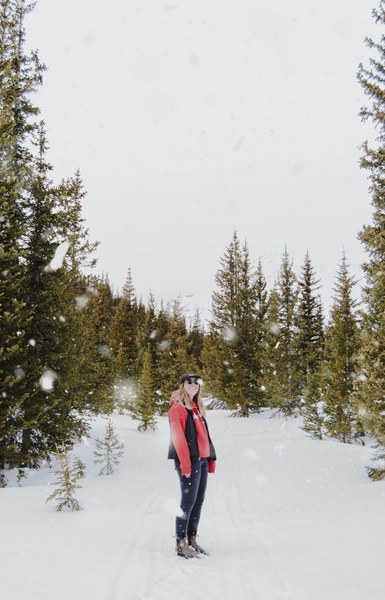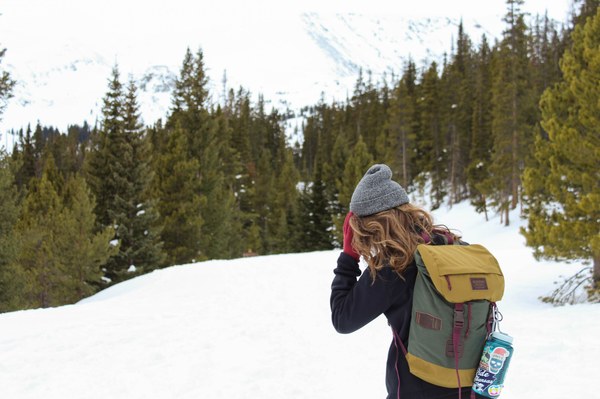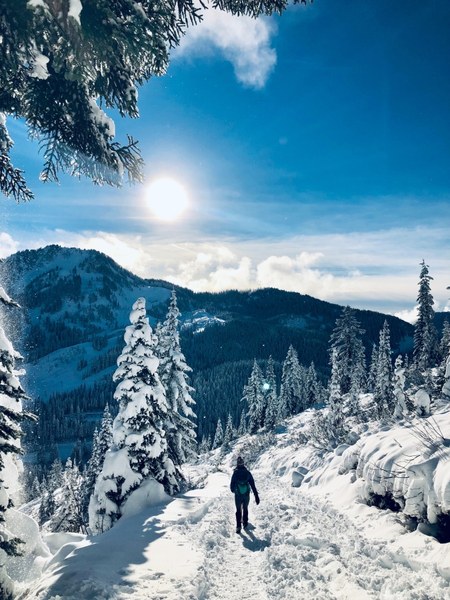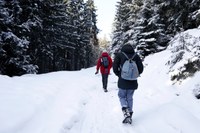Myself and the instructors of the CMC Hiking Safety Seminar share the following suggestions. They will help keep your off season hikes safe and fun.
- Carry something to sit on. Cold ground steals your warmth quickly, even in summer. A piece of closed cell foam cut to fit the back interior wall of your daypack works well. It provides padding in your pack and is always available if you need it.
- Add snow baskets to your hiking poles. You will not notice them on dirt trails, but be very glad to have them on snowy patches and drifts.
- Gaiters are coverings for boots and lower legs. They keep the snow out of your boot tops and add overall warmth.

- Snow free tree wells form around the base of pine trees. These pits can provide wind protection in an emergency and are useable if you enter carefully. They can be dangerous traps if you unintentionally fall into one, as they are difficult to climb out of.
- Carry chemical hand warmers. These weigh little and are invaluable in an emergency. Hand warmers should be packed/carried in an inner clothing layer, because they may not warm up if placed in a cold backpack. Pay attention to expiration dates on packages. Our experience is they seem to have about a two-year shelf life.
- Watch out for dehydration. Don’t let the cooler weather and/or snow influence your liquid replenishment. Drink frequently. The body’s warming system works better when hydrated.
- Fall and winter weather demand more precautions. Don’t be casual about it as you make plans for a hike or backpack. Step up your level of preparation, equipment and planning.

- Be alert to various hunting seasons. In Colorado, hunting occurs from late August through mid-November. Wear hunter orange, pink or other bright colors. Know the jurisdiction you are in. Hunting is allowed in National Forests, Wilderness areas, BLM lands and some state/county parks. It is not allowed in National Parks.
- Carry your extra clothes in a waterproof bag. Few packs are waterproof and snow has a persistent way of creeping into them. A Sea to Summit roll top bag works well.
- Clothing: Add a neck gaiter (buff) to your clothing list. A lot of our thermo regulation comes from the back of the neck. A draft there can make you feel colder than you actually are. Balaclavas also work well. Mittens are bulky, but are warmer than gloves. Carry an extra pair of warm socks, but be aware that socks that are too thick can constrict blood flow. Keep an additional, dry layer handy for warmth during breaks.
- If weather is freezing, carry your water bottles upside down. Water freezes from the top down. A thermos bottle is a nice fall/winter gear addition. Or carry a water bottle inside your jacket. Insulated water bottle carriers work well and are commercially available. They keep hot beverages warm for a long time. Or wrap a bottle in clothes in your pack. Start cold trips with hot water.

- Wear cold weather hiking boots. These insulated, weatherproof non-leather boots started appearing about 5 years ago. They keep your feet warm and have treads designed for snow.
- Carry micro-spikes. Crampons are for big mountains and YAK Tracs are for parking lots. Micro-spikes are well regarded and work great on icy trails and compacted snow. Cold weather boots and micro-spikes are a great combination.
- Carry a headlamp. It gets dark early, in fall and winter and you may find yourself walking home in the night.
- Choose your destinations wisely. Easy summer routes have the potential to become deadly avalanche zones in winter.
 Art Hogling
Art Hogling

Add a comment
Log in to add comments.